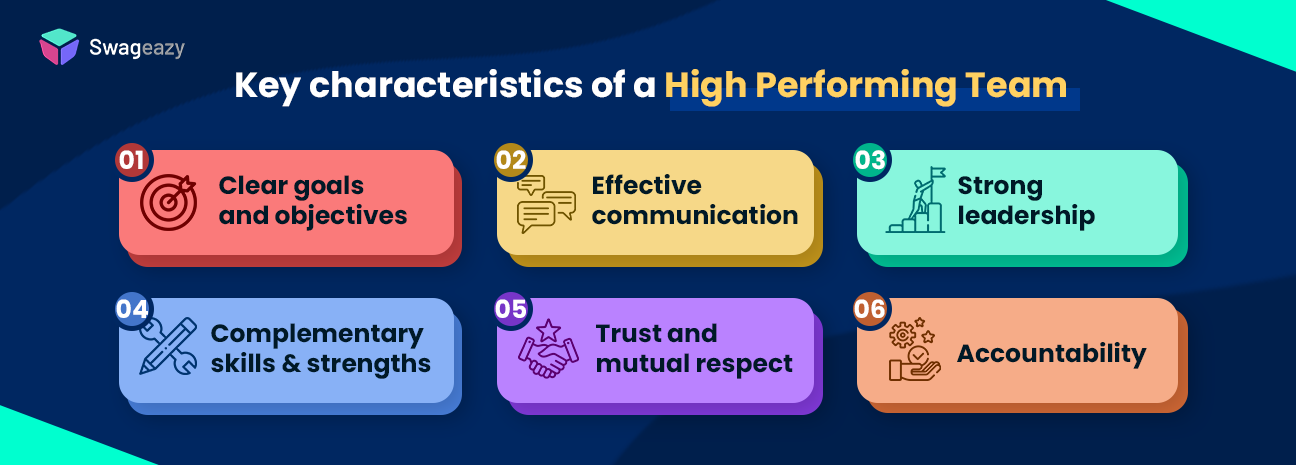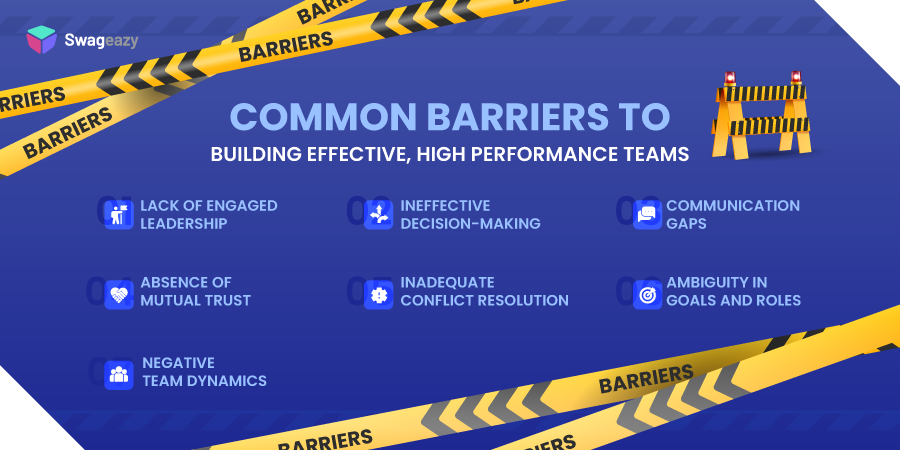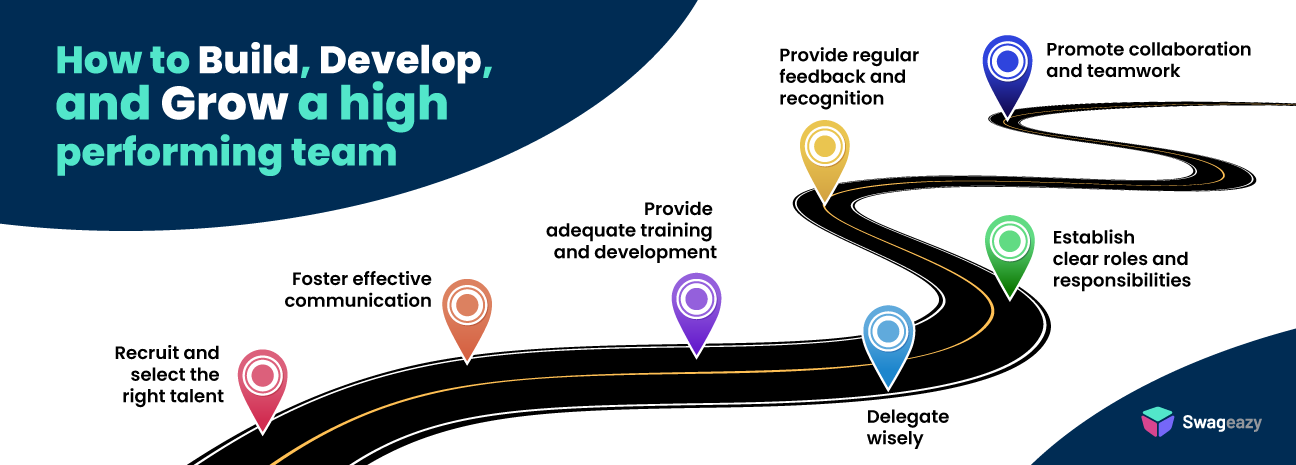
How To Build Successful, High Performing Teams In 2023-24
The need for high-performing teams has taken center stage in 2023. The winds of change have blown strong, urging organizations to recalibrate their approach to teamwork, collaboration, and productivity.
As the global community adapts to new norms and challenges, the need for teams that not only weather the storm but thrive amidst it has never been more crucial. In this dynamic era, marked by rapid technological advancements, shifting market dynamics, and a relentless pursuit of innovation, the significance of high performance cannot be overstated.
So, what has spurred this sudden surge in demand for teams that stand out in their prowess? The answer lies in a world that refuses to stand still.
From the emergence of groundbreaking technologies to the redefinition of workspaces, 2023 has proven to be a pivotal year. Organizations are realizing that the age-old paradigms of team dynamics must evolve to meet these new demands.
In this blog, we aim to help you dissect the very essence of high-performing teams. We’ll discuss:
- What it means to be a high performing team,
- Key characteristics that make up a high performing team,
- Common types of performance teams,
- Common barriers to building effective, high performance teams, and
- How to build, develop, and grow a high performing team.
Ready? Let’s get right in!
Defining a high performance team
A high-performance team is a group of individuals who consistently deliver exceptional results. They work together efficiently, leveraging each member's strengths to achieve organizational goals.
These teams thrive on adaptability, readily adjusting to change and uncertainty. They maintain a commitment to continuous improvement, valuing both individual and collective growth.
Clear communication, trust, and respect are at the core of high-performance teams. They create an environment where every member feels valued and heard, fostering creativity and innovation.
This foundation of trust enables teams to take calculated risks and pursue new ideas with confidence.
Key characteristics of a high performing team
To cultivate a high-performing team, it's crucial to understand the specific attributes that set them apart. These characteristics serve as the bedrock upon which exceptional teamwork is built.
Let's explore the key elements that have always defined high-performing teams.

1. Work teams
Work teams are the foundation of day-to-day operations within an organization. These are the teams responsible for executing regular tasks and processes.
Work teams are characterized by their stability and continuity, as they often consist of members who work together on an ongoing basis.
Their primary focus is on achieving operational efficiency and maintaining consistent performance levels.
2. Project teams
Project teams are assembled for a specific task or project with a defined scope and timeline. They are temporary in nature and disband once the project is completed.
Project teams are tasked with bringing specialized skills and expertise to tackle unique challenges. They require a high level of coordination, effective communication, and a clear understanding of project objectives.
3. Management teams
Management teams are composed of key leaders within an organization. These individuals are responsible for making strategic decisions and setting the overall direction of the company.
They often consist of top executives from various departments, such as finance, operations, marketing, and human resources. Their collaboration is essential for aligning organizational strategies and ensuring cohesive leadership.
4. Parallel teams
Parallel teams operate alongside existing work or project teams to address specific issues or challenges. They draw members from different departments or functions to provide a fresh perspective and specialized expertise.
Parallel teams are temporary and dissolve once their objectives are met. They are particularly valuable for troubleshooting complex problems or driving innovation.
5. Virtual teams
In an increasingly interconnected world, virtual teams have become more prevalent. These teams consist of members who are geographically dispersed but work together through digital communication tools.
Virtual teams require strong communication skills and the ability to collaborate effectively across different time zones and cultures. They offer the advantage of tapping into a global talent pool and promoting diversity of thought.
Common barriers to building effective, high performance teams
Even with the best intentions, teams can face various challenges that hinder their effectiveness. Recognizing and addressing these barriers is crucial for fostering a high-performing team.

- Lack of engaged leadership - Effective leadership is pivotal for guiding and inspiring team members. When leaders are not actively involved or fail to provide clear direction, it can lead to uncertainty and reduced morale within the team.
- Ineffective decision-making - Slow or indecisive decision-making processes can impede progress. It's crucial for teams to have a structured approach to making decisions promptly and efficiently
- Communication gaps -Incomplete or unclear communication can lead to misunderstandings, missed deadlines, and reduced productivity. It's essential to establish open channels for transparent and effective communication.
- Absence of mutual trust -Trust is the foundation of any successful team. When trust is lacking, team members may hesitate to take risks, share ideas, or collaborate fully. Building trust requires consistent actions and transparent communication.
- Inadequate conflict resolution -Conflict is natural within any team, but it must be addressed constructively. Failing to resolve conflicts can lead to resentment and a breakdown in team cohesion.
- Ambiguity in goals and roles - Unclear objectives and roles can lead to confusion and inefficiency. Team members need a clear understanding of their responsibilities and how they contribute to the overall goals
- Negative team dynamics -Poor interpersonal relationships and unresolved conflicts can create a negative team environment. This can lead to reduced morale and productivity
How to build, develop, and grow a high performing team
Creating and nurturing a high-performing team requires intentional effort and a strategic approach. Here are actionable steps you can take to foster a team that consistently achieves outstanding results.

1. Recruit and select the right talent
Building a high-performing team begins with strategic recruitment. It's imperative to define clear job profiles, specifying the required qualifications, skills, and attributes for each role.
Conduct behavioral interviews and practical assessments to evaluate candidates' problem-solving and teamwork abilities.
Additionally, assess cultural fit by considering whether candidates align with the organization's values. This ensures that you bring in individuals who not only possess the necessary skills but also resonate with the team's goals and dynamics.
2. Foster effective communication
Effective communication lies at the heart of any high-performing team. Establish regular team meetings and utilize communication technology to facilitate seamless interaction, especially for remote or dispersed teams.
Encourage active listening, ensuring that every team member's perspectives are valued and understood.
Moreover, it's crucial to clarify expectations by clearly communicating goals, deadlines, and project milestones. This prevents misunderstandings and keeps everyone on the same page.
3. Provide adequate training and development
Investing in the growth of team members is fundamental to team success. Create individualized development plans based on each team member's professional goals. Encourage cross-training to diversify skills and promote continuous learning.
Additionally, provide access to workshops, courses, or mentoring programs tailored to individual needs. This not only enhances their skills but also boosts their confidence and morale, leading to a more capable and motivated team.
4. Delegate wisely
Effective delegation empowers team members to take ownership of their tasks and contribute to the team's success. To do this, it's crucial to understand each team member's strengths and assign tasks that align with their expertise.
Set clear expectations by defining project objectives, expected outcomes, and any specific requirements for delegated tasks.
Establish regular check-ins to track progress, address questions, and provide guidance, ensuring that tasks are completed efficiently and effectively.
5. Promote collaboration and teamwork
Fostering a culture of collaboration is essential for a high-performing team. Encourage knowledge sharing by implementing a platform or system for team members to share insights, best practices, and resources.
Assign group projects that require input from multiple team members, providing opportunities for collective problem-solving and creativity.
Additionally, celebrate achievements together to reinforce the value of teamwork and build a sense of camaraderie among team members.
6. Establish clear roles and responsibilities
Clarity in roles and responsibilities is vital to prevent confusion and ensure efficient operations. Document role descriptions, outlining specific tasks, responsibilities, and key objectives for each team member
Regularly review and adjust roles as projects and team dynamics evolve, ensuring alignment with current needs. Encourage role ownership, empowering team members to take charge of their responsibilities and contribute actively to the team's success.
7. Provide regular feedback and recognition
Timely and constructive feedback is a cornerstone of growth and development within a team. Offer specific insights promptly, addressing both strengths and areas for improvement.
Additionally, make sure to regularly show employee appreciation and recognition for individual and team accomplishments. This can be done through various means, whether through public praise or private acknowledgments.
Implement a structured recognition program to formally acknowledge outstanding performance and reinforce a culture of excellence and motivation within the team.
These gestures of appreciation and recognition play a vital role in fostering a positive and productive team environment.
Running short of ideas on how to effectively show appreciation to your employees? Here’s an article you can check out: Top 15 Employee Appreciation Ideas to Implement in 2023.
Wrapping up,
As we stand at the precipice of a future defined by innovation and adaptability, the significance of high-performing teams has never been more profound.
In this era, success hinges on the collective strength of individuals united by a shared purpose. It requires leaders to not only envision greatness but to nurture it through deliberate action.
In the future, building high-performing teams transcends mere strategy. Organizations need to understand that the true strength of a team lies not only in its achievements but also in the collective belief that they are capable of even greater heights.
It's recognizing that the journey toward excellence is dynamic, requiring the courage to pivot, innovate, and inspire.
If you like what you read and are interested in diving into the intricacies of employee experience, appreciation, and recognition, do check out our Swageazy blog for more topics like this!